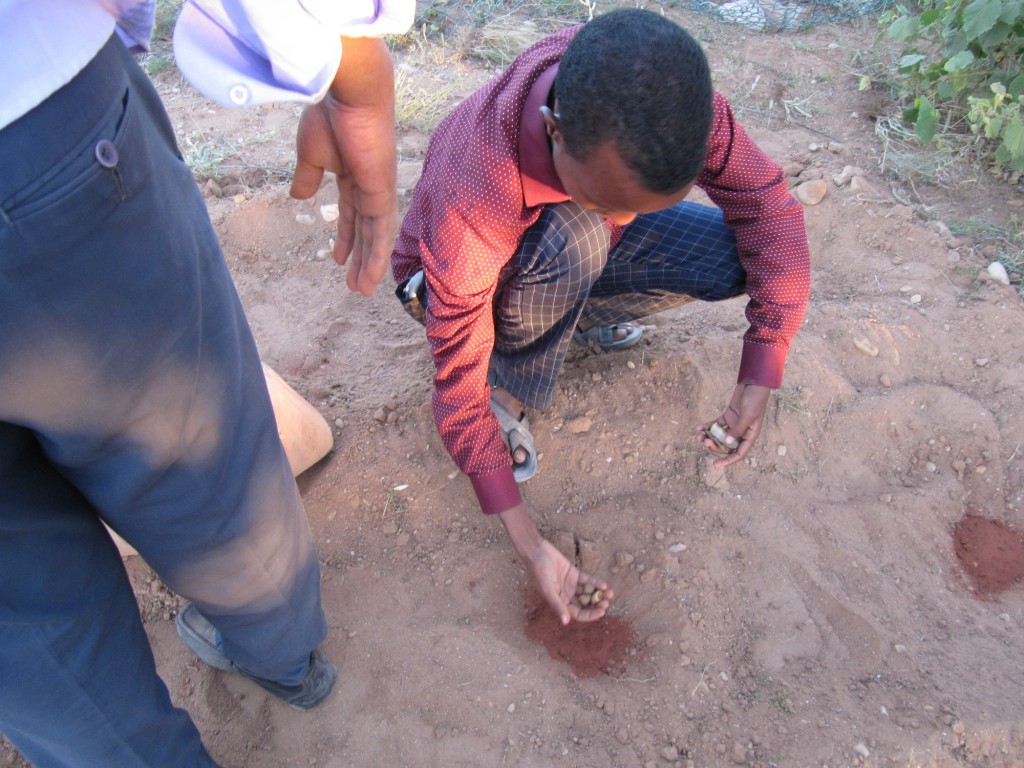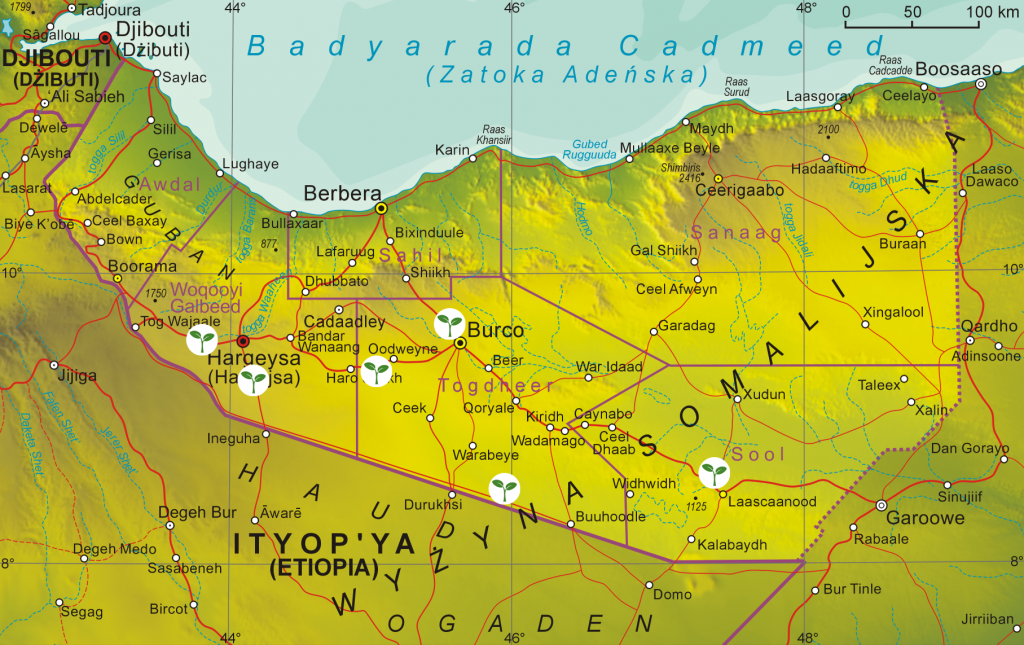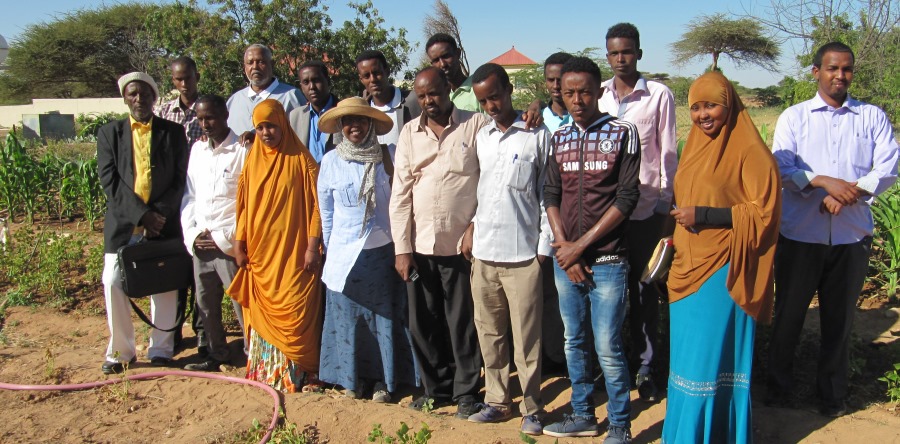In December 2015, project leader Muna Ismail made a second journey to Somaliland. This time the aim was to plant Yeheb seeds and seedlings at sites that had been identified during the scoping mission earlier in the year.
The seeds were brought by road by a farmer from central Somalia. He has asked us not to use his name and he refused any payment for his time. He gathered the seeds and soil from under wild Yeheb bushes as a gift. Having brought them, he travelled with Muna to several of the sites to see them planted.
The soil was used in planting as shown in the photograph below, to maximise the chances that essential fungi would be present close to the roots of the seedling as it developed (we suspect, though we cannot be sure, that Yeheb has relies on mycorrhizal relationships to fix Nitrogen).

Planting Yeheb seeds using soil taken from the base of mature shrubs. The red soil from central Somalia stands out against the brown sands of the planting site.
Together, Muna and our local partners managed to reintroduce Yeheb to six sites, exhibiting different habitats and levels of rainfall. The focus of the project is in Togdheer region, whose soil and climate are best-suited to Yeheb. Planting was carried out on the campus of our partners at Burao University, in the village of Ali Essa close to the Ethiopian border and in Odweyne district. Out local partners Candlelight and the Social Relief Organisation chose three more sites where they will look after the plants in their vulnerable first few months.

This map (which uses Somali spelling) shows the six sites where Yeheb was planted in December 2015, chosen to see how Yeheb would thrive in a variety of conditions. Please click on the map to see a larger version.
The sites are (running from West to East on the map):
- Site 1 Awbarkhadley, site chosen by Candlelight
- Site 2 Adadley, site chosen by Candlelight
- Site 3 Oodweyne district, the farm of Mr Abdi Abdillahi
- Site 4 Burao University Campus
- Site 5 Ali Essa village, within the school compound
- Site 6 Las Anod, experimental farm of the Social Relief Organisation
The seedlings proved resilient and those that had wilted on the journey recovered when planted out and watered. Seeds germinated successfully. The challenge now is to look after the young plants as they develop and in particular to save them from being grazed by goats, which find the leaves of Yeheb especially palatable.

